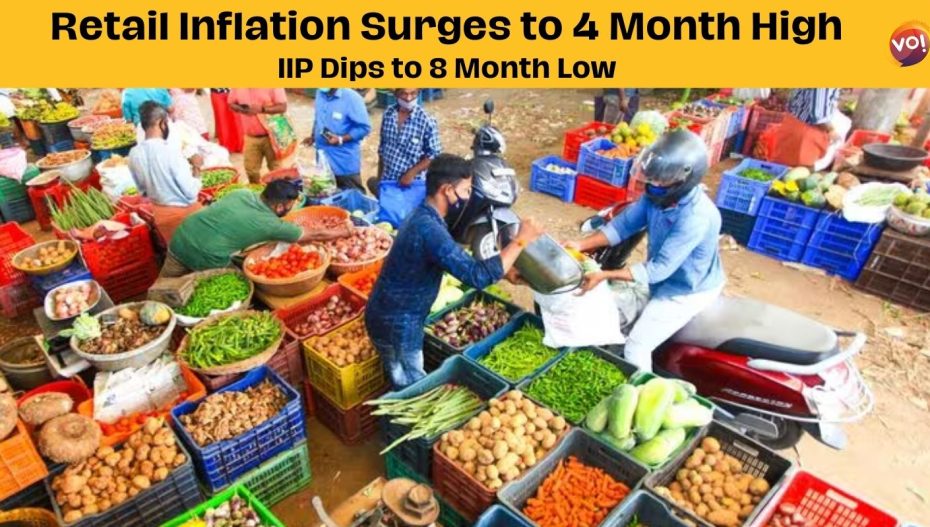In a recent release by the National Statistical Office (NSO) on Friday, retail inflation in India surged to a four-month high, reaching 5.69 percent in December. This increase was primarily driven by elevated prices of food items such as pulses, spices, fruits, and vegetables.
Simultaneously, separate data from the NSO revealed that the Index of Industrial Production (IIP) dropped to an eight-month low of 2.4 percent in November, compared to 11.6 percent the previous month and 7.6 percent a year ago. This decline was attributed to a high-base effect and slower growth in manufacturing, mining, and capital goods output.
This marks the second consecutive month of a rise in headline retail inflation and the continuation of retail inflation staying above the 4 percent mark for four calendar years and a quarter (51 months) within the 4 +/- 2 percent band set by the Reserve Bank of India (RBI).
The annual rate of food inflation, measured by the Consumer Food Price Index, surged to 9.53 percent in December from 8.70 percent in November, with urban areas experiencing a double-digit food inflation of 10.42 percent, while rural areas recorded 8.49 percent.
In contrast, core inflation, excluding food and fuel, eased to a sub-4 percent level for the first time in the post-pandemic period, standing at 3.9 percent in December compared to 4.1 percent in November.
Vegetable inflation increased to 27.64 percent in December from 17.70 percent in November, while pulses and spices inflation rose to 20.73 percent and 19.69 percent, respectively. Cereal inflation remained high at 9.93 percent, though slightly lower than November’s 10.27 percent.
Goods inflation remained high at nearly 9.5 percent, leading economists to predict a prolonged pause in the rate cycle by the RBI.
On the industrial front, manufacturing, which constitutes 77.6 percent of the IIP, grew by 1.2 percent in November, compared to 10.2 percent in October and 6.7 percent in November 2022. Output of capital goods, an indicator of investment, slumped to a 13-month low of (-)1.1 percent in November.
Concerns were raised about the vulnerability of certain items like rice, wheat, and pulses due to the estimated fall in annual kharif production and ongoing rabi sowing season amid El Nino conditions.
Nine out of the 22 major states/UTs registered an inflation rate above the national average of 5.69 percent in December, with Gujarat leading at 7.07 percent, followed by Rajasthan, Haryana, Karnataka, and Maharashtra.
Overall, these economic indicators suggest a complex scenario for India, with inflationary pressures and a slowdown in industrial output posing challenges for policymakers and businesses alike.
Also Read, Ram Mandir Event Showcasing Artistry And Creativity













